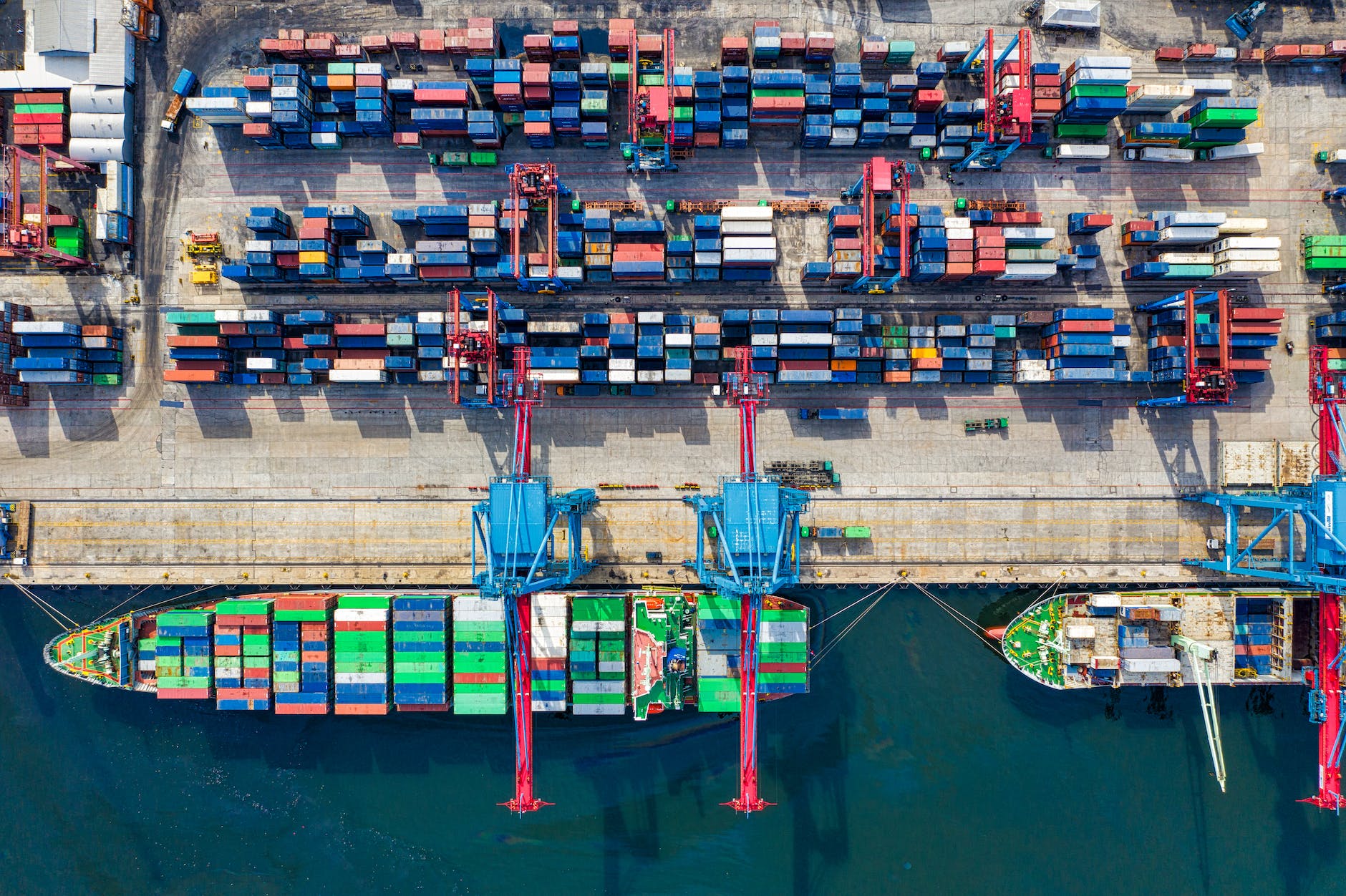In recent developments, China, a dominant player in the global semiconductor industry, has taken a decisive step by imposing export restrictions on two crucial minerals used in semiconductor chip production: Rare Earth Elements (REEs) such as Gallium and Germanium. These minerals play a pivotal role in various stages of chip manufacturing, making them indispensable for a wide array of electronic devices. This article delves into the significance of these minerals, explores the reasons behind China’s export restrictions, and highlights the far-reaching implications for global supply chains and the tech industry.

The Significance of Rare Earth Elements and Gallium in Semiconductor Production
Rare Earth Elements (REEs): The group of 17 chemical elements known as REEs, including neodymium, dysprosium, and praseodymium, is of utmost importance in producing high-performance magnets. These magnets find extensive use in electric vehicle motors, wind turbines, and, most crucially, in miniaturized components of semiconductor chips. Additionally, REEs contribute to various stages of semiconductor manufacturing, such as polishing, cleaning, and doping processes. Gallium, a versatile metal, has garnered increasing significance in the semiconductor industry due to its unique properties. Gallium-based semiconductor chips, like gallium arsenide (GaAs), are vital for high-frequency and high-speed applications. GaAs chips are commonly found in wireless communication devices, aerospace and defence equipment, and other specialized electronic systems.
The Process to Extract Gallium and Its Importance
Gallium is a valuable metal widely used in various high-tech applications, especially in the semiconductor industry. It is primarily obtained as a by-product of aluminium and zinc ore processing. The process of extracting gallium involves several steps: 1. Bauxite Mining: Gallium is typically found in trace amounts in bauxite, the primary ore for aluminium. Bauxite mining involves extracting aluminium-rich ores from the Earth’s crust through open-pit or underground methods. 2. Bayer Process: After bauxite is mined, it undergoes the Bayer process to extract alumina (aluminium oxide) from the ore. This process involves crushing and refining bauxite into a fine powder, followed by mixing it with a hot, concentrated solution of sodium hydroxide. 3. Gallium Recovery: During the Bayer process, gallium leaches out of the bauxite and dissolves in the sodium hydroxide solution. After the extraction of alumina, gallium is separated from the sodium hydroxide solution through various chemical and physical processes. 4. Electrolytic Refining: The final step involves the electrolytic refining of gallium to obtain a high-purity metal. This refining process is crucial for meeting the stringent quality requirements of the semiconductor industry.
Importance of Gallium:
Gallium plays a critical role in manufacturing semiconductor chips, particularly gallium arsenide (GaAs) chips. These chips are essential for high-frequency and high-speed applications, such as 5G wireless communication, satellite systems, radar equipment, and optical fibre communication. GaAs chips offer superior performance compared to traditional silicon-based chips in these specialized applications. Moreover, gallium is used to produce optoelectronic devices, including light-emitting diodes (LEDs) and laser diodes. GaAs-based LEDs emit light with greater efficiency, making them ideal for high-brightness displays, traffic lights, and optical data transmission. The unique properties of gallium, such as its low melting point and ability to form alloys with other metals, also find applications in aerospace and defence technologies, including producing high-temperature thermometers, solar cells for space exploration, and cooling systems for nuclear reactors. Due to its versatility and the ever-increasing demand for high-performance electronic devices, gallium has become an indispensable element in modern technology. Its extraction and refining are essential to ensure a stable supply for the semiconductor and electronics industries, driving innovation and advancing various cutting-edge technologies.
China’s Decision to Restrict Exports
China’s move to restrict the exports of REEs and Gallium arises amidst geopolitical tensions and strategic considerations. As a major producer and supplier of these minerals, China has wielded its market dominance as a bargaining tool in international trade relations. By imposing export controls, China aims to enhance its leverage and secure a stronger global semiconductor supply chain position. Moreover, the demand for REEs and Gallium has skyrocketed in recent years, driven by the rapid expansion of emerging technologies such as 5G, the Internet of Things (IoT), artificial intelligence, and electric vehicles. With a focus on bolstering its domestic tech development and achieving self-sufficiency, safeguarding critical minerals for its own burgeoning tech sector has become a top priority for China.

Impacts on Global Supply Chains
The repercussions of China’s export restrictions on REEs and Gallium are far-reaching and profound, significantly impacting global semiconductor supply chains and the tech industry at large: Semiconductor Manufacturing Disruptions: Semiconductor manufacturers outside China heavily rely on the country’s supply of REEs and Gallium. The restrictions could lead to production delays, hampering the timely delivery of chips and resulting in potential shortages of electronic devices worldwide.
Increased Production Costs: To cope with limited access to these critical minerals, manufacturers may seek alternative supply sources, which could be costlier. The added expenses may translate to higher production costs that consumers could ultimately bear.
Supply Chain Diversification: In response to China’s export controls, stakeholders in the tech industry may intensify efforts to diversify their supply sources for REEs and Gallium. This could lead to increased exploration and development of mineral deposits in other regions, reducing dependence on China and fostering new mining markets.
Geopolitical Implications: China’s export restrictions could escalate trade and diplomatic tensions with countries heavily reliant on these minerals for their tech industries. Nations seeking stable trade flows may engage in dialogues and negotiations to mitigate potential economic fallout.
Innovation and Research: The constraints on REEs and Gallium supply may incentivise manufacturers to explore alternative materials and semiconductor technologies. This could drive research and innovation, fostering the development of more sustainable and efficient chip manufacturing processes.

Conclusion
China’s decision to restrict the export of Rare Earth Elements, two vital minerals in semiconductor manufacturing, will profoundly impact global supply chains and the tech industry. As the situation unfolds, companies, governments, and stakeholders in the tech sector must collaboratively strategize to mitigate disruptions and ensure the resilience of global supply chains. Balancing the quest for self-sufficiency and technology development with the need for stable global trade is crucial in navigating the evolving landscape of the semiconductor market. Considering recent events, it has become evident that we need to rethink and approach our supply chains with greater resilience and adaptability. The restrictions imposed by China on the export of Rare Earth Elements and Gallium serve as a stark reminder of the vulnerabilities and dependencies that can arise within global supply networks. Rather than viewing this action as a challenge, we must stress that such disruptions present opportunities for growth and transformation. As companies and industries seek to diversify their sources and reduce reliance on a single supplier, new markets and mining opportunities may emerge. Exploring alternative materials and technologies can spur innovation and lead to more sustainable practices. Emphasizing the need for agility and forward-thinking, this situation prompts us to reconsider our supply chain strategies and leverage potential openings to strengthen our global economic landscape. By embracing change and taking proactive measures, we can navigate these shifts and unlock new possibilities for growth and collaboration.

Leave a Reply